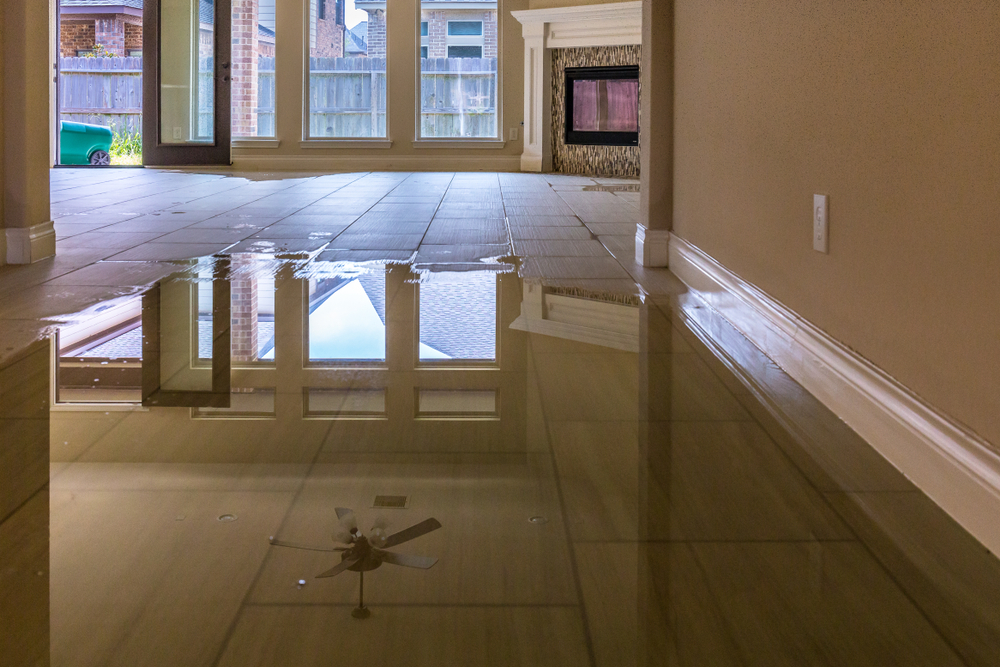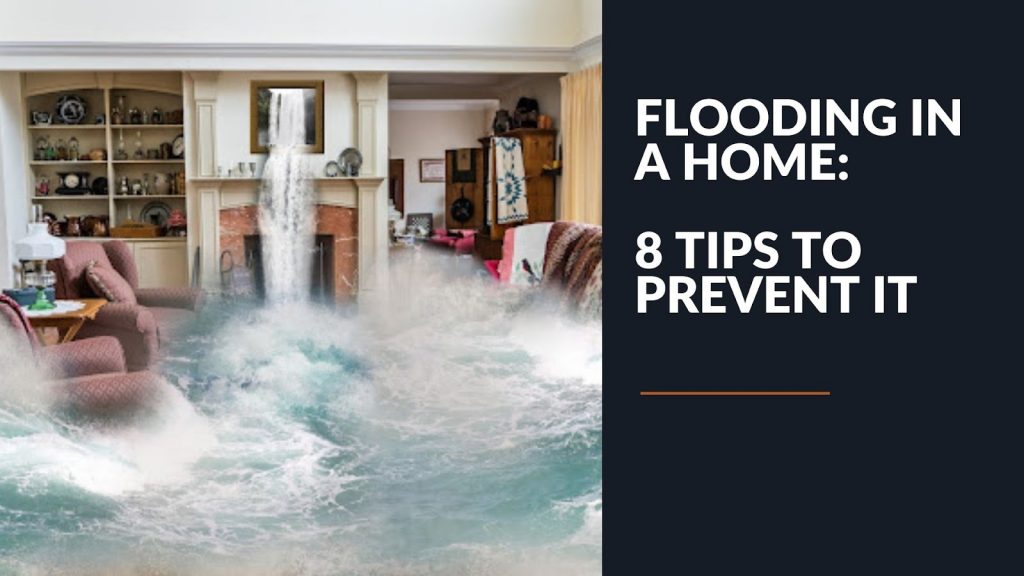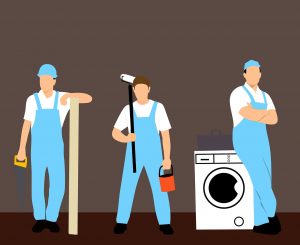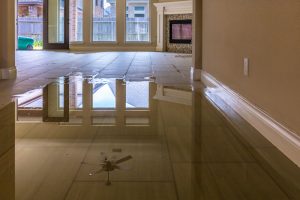Is your home vulnerable to flooding whenever it rains? Well, you need to find ways to protect it from the impact of flooding, especially when the rainy season approaches. Taking the proper steps can help prevent the potential damage it can lead to and reduce the risk of diseases.
You might be wondering how to prevent a flood from damaging your home. This post has tips that will help you avoid the detrimental effects flooding can bring. If you are a new homeowner or haven’t experienced floods before, the information shared in this post will be invaluable.
Here’s what you should do to keep your home safe from floods.
1. Determine Flood Risks
When you decide that you are going to take steps to safeguard your house from flooding, you should realize that it doesn’t start after your home is built. It would be best to determine flood risks before moving into an area. You can have experts help you find land in places where it’s less likely to flood because this can be tricky to tell.
If you insist on staying in an area with flooding potential, find out how to counter its effects. You can speak to your contractor about it so they can design your house correctly. This will ensure you don’t feel the impact of floods, even if it rains heavily after moving into the new home.
Examine the Drains
Your drainage system will play a critical role in preventing the effects of floods. Building flood drainage systems will help prevent water from rising, leading to backflow in sinks and toilets. The best way to do this is by examining your drains regularly to ensure they’re working.
Also, you can add things like one-way valves that help prevent backflow. This will ensure your home remains in perfect condition even if the flood drains get overloaded. You’ll need an experienced and licensed plumber who understands how to prevent floods for the drain examination.
Reduce Concrete Slab Areas
Concrete slab areas look great, but they might not suit your home if you live in a flood-risk area. One way to prevent flooding is to ensure water sinks into the ground after it rains. This can help reduce the chances of flooding and make your home as habitable as possible.
Reducing the concrete slabs in your compound will allow water to sink in quickly. If you need to create driveways, consider options that allow water to sink, such as gravel. You can also use porous concrete or asphalt to make flooding difficult.
2. Slot-in Flood Barriers
This is an excellent piece of technology that can help you prevent flooding. It is an inexpensive technique to help you keep flood water away outdoors. If you don’t do this, water could get indoors through doorways, and it won’t take long before your items get submerged.
Slot-in flood barriers come with a wide range of benefits. As the name suggests, you only need to slot them in to create a water-tight seal. This means they are easy to install and don’t require any technical knowledge. These barriers are removable, and you can reuse them for a long time.
In tandem with flood barriers, you can also create a rain garden to keep the flood water outdoors. After all, the best way to stave flooding damage is to never let is happen!
3. Clean Ditches, Drains, Gutters, and Downspouts
Cleaning your drainage system on a systematic basis can help you prevent flooding. The leaves falling during the fall season can pile up on your gutters. Or, some might get washed into sewage drains where they could pile up and cause blockages. In the end, this might lead to flooding.
While fall might be beautiful, it comes with a lot of cleaning work. Ensure you get rid of the falling leaves, so they don’t pile up. If you have a lot of trees in your compound, you might need to do these cleanups more often. Otherwise, the flooding damage this debris causes will be costly.
4. Install Flash Flood Doors
Doors provide much space for flood water to get into your home. Being the most vulnerable entry point, you need to find a solution for them. The good news is that there are ways to work around doors. You can invest in and install water-tight doors to help keep flood water outdoors.
When shopping for doors, insist on water-tight doors. While they might cost you a little more than normal doors, they’ll save you from a lot of damage in the long run. These doors have rubber sealing systems that make them water-tight. Installing them is one of the practical ways to prevent a flood.
5.Do Regular Inspections and Repairs
Regular examinations of your home’s structural foundation can be an excellent idea. It can help you identify the structural issues that might let floods into your home. Then you can act quickly to repair your home and prevent a potential flood that could destroy your home further.
Several things might require your attention. For instance, you might need to fix your foundation if it leaks. Repairing a leaking roof, sideways and driveways is also critical. Working with a qualified contractor for such technical repairs might help resolve them quickly and efficiently.
Conduct Regular Tests on Your Systems
Testing your flood drainage systems is an essential task. You should ensure that it works efficiently and can handle even the worst floods. You must test your sump pump because it helps monitor water levels. You might not be able to control floods efficiently without it.
Ensure it can remove excess water at the correct rate to prevent it from rising further. Also, you should have a backup battery and test it to ensure it works well if a heavy storm causes a power outage. Tests help you find issues that could come as a surprise later.
Keeping your systems in order is of the utmost importance. There’s no telling what damage will be done if water levels rise too high. Keeping your sump pump (and other systems) maintained can be a bit of an investment. The costs will only rise if you cut corners and end up replacing floors, cabinets, electronics, and other items with flooding damage.
6. Buy Flood Insurance
You are wrong if you thought your standard homeowner’s insurance would cover damage from floods. Homeowners are encouraged to buy flood insurance if they need it. Purchasing this insurance is a decision that should come from inspecting the flood risks mentioned earlier.
You don’t need to buy it if you don’t think your home could be at risk of flooding. Otherwise, talk to your insurance company about this policy. They’ll consider factors like your location, structure size, etc., to determine the best insurance costs.
If you’re on the fence, then remember that many household products come with warranties. You may not live in a heavy flooding area, but your home could still be at risk for flooding damage. You may not need to go the full nine yards. Instead, invest in home products that are water-resistant and under warranty for potential damages.
7. Raise Your Home
Raising your home might be an excellent idea if you live in a high-risk area. There are many raised homes in neighborhoods. You can talk to other homeowners for recommendations for contractors. Raising your entire home during floods will help you avoid the potential damages.
They need to start by determining the potential flood level. Then, they’ll use piers or columns to give your home the desired raise. This might seem like an expensive solution, but it is worth taking. One reason to consider it is because it can be a perfect permanent solution.
Keep Sandbags Handy
You also should have sandbags in advance if you live in a flood-prone area. They can help ensure your home remains safe from floods. You should always have sandbags ready and deploy them at the right time before the water rises too high.
Buying sandbags in advance is an excellent idea because of their cost. The prices tend to be higher when there’s an imminent storm. The best option will be to buy during the dry season when their prices are low and store them in your home for emergencies.
8. Install Flood Sensors
There are different kinds of equipment that you should install in your home. Flood sensors are among the items that should be in your home. They alert you of a potential flood in your home even when you’re far away. This will ensure you send a signal to those that might not be aware.
Because it is, you should treat a flood sensor as part of your home security system. Also, it would be best to have a flood emergency plan alongside this critical equipment. This will ensure you respond quickly and appropriately to floods before they cause severe damage.
Purchase a Generator for Power Outages
Flood sensors and other equipment you might install in your home require power. But heavy rain can damage power lines and turn off this essential equipment. This is why you should invest in a backup option to cater to any outages that might occur.
Having a generator will help ensure your equipment remains powered all through. This means you won’t miss a signal from your flood sensors because they were off. Your backup generator will turn on immediately after the power goes off to ensure everything runs smoothly.
Final Thoughts
Now you have the best measures for preventing flooding in your home. These tips can save you the money and time you’d have spent doing repairs after damage from floods. It’ll be worth noting that flooding is sometimes an unforeseen emergency, so it’s better to be ready for it.
You can start by determining how risky your home is to flooding. This means examining the drains, gutters, downspouts, and many more. We also mentioned conducting regular tests on your flood drainage systems. These tests will help you know where you need to do better to ensure you prevent floods.

About the Author
Meet Bridgett, your friendly neighborhood green building guru! With more years of experience than she’d like to admit, Bridgett is your go-to expert for all things eco-friendly construction. She’s on a mission to make your home the envy of every tree hugger in town (and maybe even the squirrels 🐿️). Let’s build a greener, funnier, and all-around better world together – one enlightened eco-conscious choice at a time!




